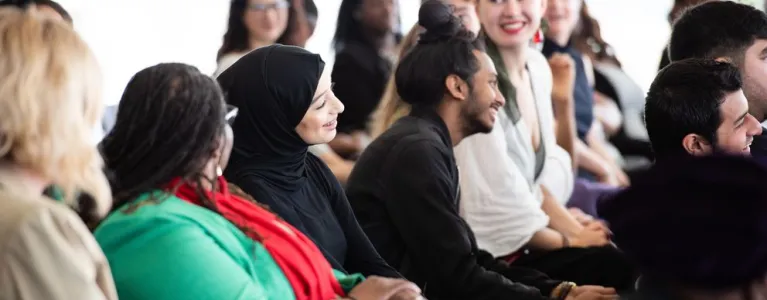
Guest blogger, Florence Walton is a researcher and a recent MA in Cultural Heritage Studies graduate. Her dissertation looked into how heritage work during the pandemic has the potential to reimagine the future of institutions by targeting inequalities and social injustices. She writes about the GLA community collecting project and the importance of capturing voice through creative mediums.
The unprecedented COVID-19 health crisis has unquestionably affected many aspects of life for Londoners, prompting individuals and communities to record their unique and shared experiences. Initiated by organisations, institutions or by individuals themselves, a plethora of creative material, including artworks, films, podcasts, photographs, stories and interviews, has been generated in response to the pandemic - creating a mosaic of stories from all walks of life in London since the outbreak of COVID-19.
The diversity of collecting projects discovered in a research study conducted for the GLA Community Engagement Team, which explores 160 projects and activities carried out in London between March 2020 and March 2021, ranges from a community patchwork quilt where each piece represents the emotions of Richmond residents to a video made by people with a learning disability to show the impact lockdown had on people with learning disabilities.
The reasons which motivated people to revisit what were often difficult experiences through creative mediums vary. For some, the restrictive measures provided more free time and navigating these unprecedented times could be seen as a fun activity, a source of distraction or an opportunity to learn a new skill, for example documentary making. Lockdowns inevitably enhanced loneliness and isolation and taking part in a collecting project, feeling part of a community or something bigger, was very important for many. It could be perceived as a therapeutic activity, providing the tools to share and understand worries and troubles.
Both as an instigator and a result, the myriad of experiences ensures that a wide variety of voices are heard and recorded for future generations. This has proved to be particularly important as the COVID 19 pandemic has disproportionally and adversely affected Londoners in relation to ethnicity, migration, gender identity or expression, sexual orientation and socioeconomic position.
It was clear to the GLA in the early stages that the creative by-products of the projects presented a pool of data which would be beneficial and essential for London’s recovery from this unprecedented situation. The analysis of the data, apart from yielding facts and figures, also incorporates the emotions, feelings, cultural views, needs and aspirations of Londoners which are often lacking in solely quantitative data. Moreover, it includes voices of those who are often more difficult to reach through mass engagement due to reasons rooted in structural exclusion.
Researching the trends and patterns of how, who, where and why Londoners have taken part in COVID-19 collecting projects and activities provides invaluable information and leads to suggestions on how the GLA Community Engagement Team can efficiently collaborate with Londoners to translate their creative material into universally beneficial restorative and visionary policies.
If you are aware of a project that has not been included in the report or data mentioned in this blog, please let us know by contacting [email protected] and we can add it to the dataset.